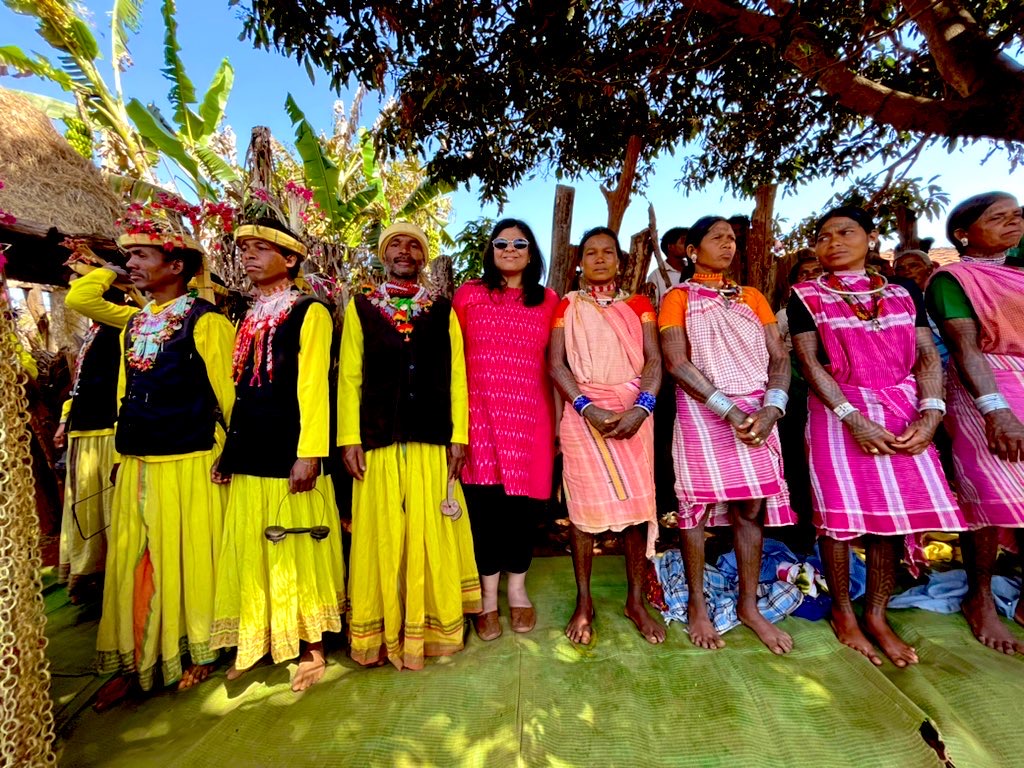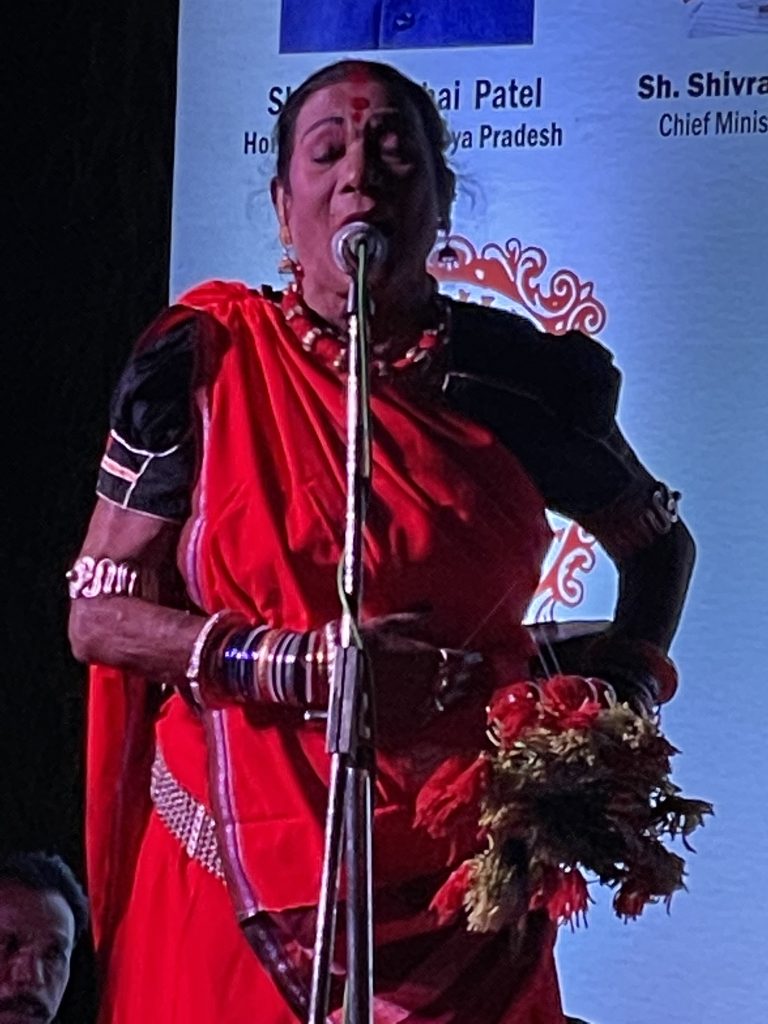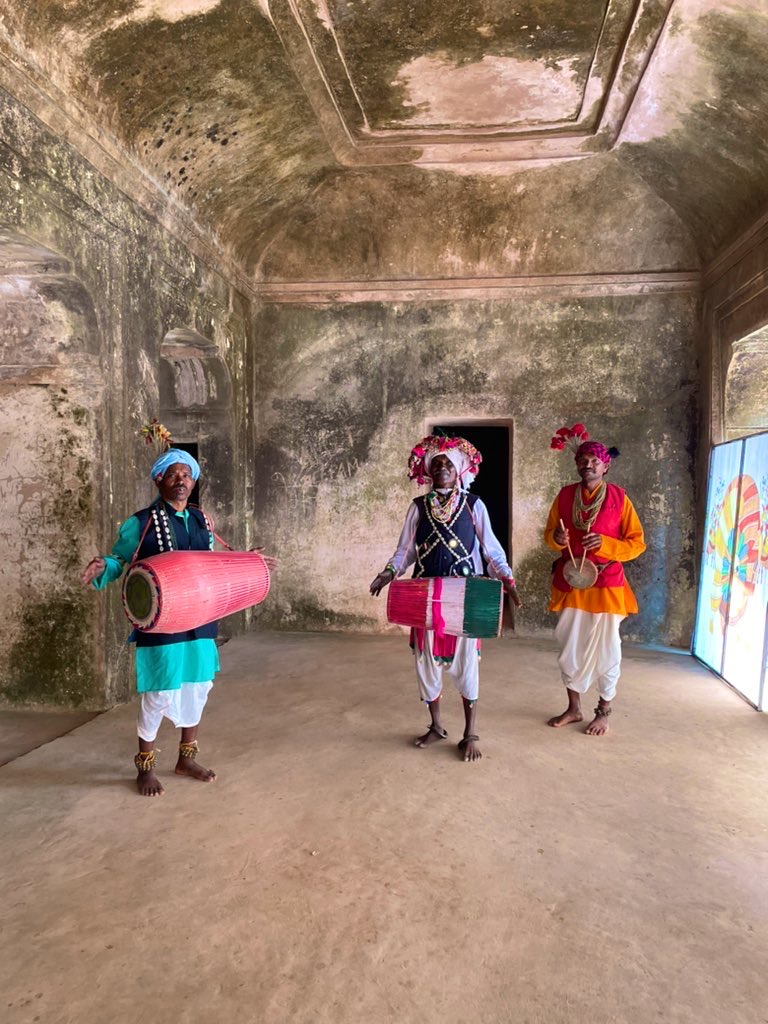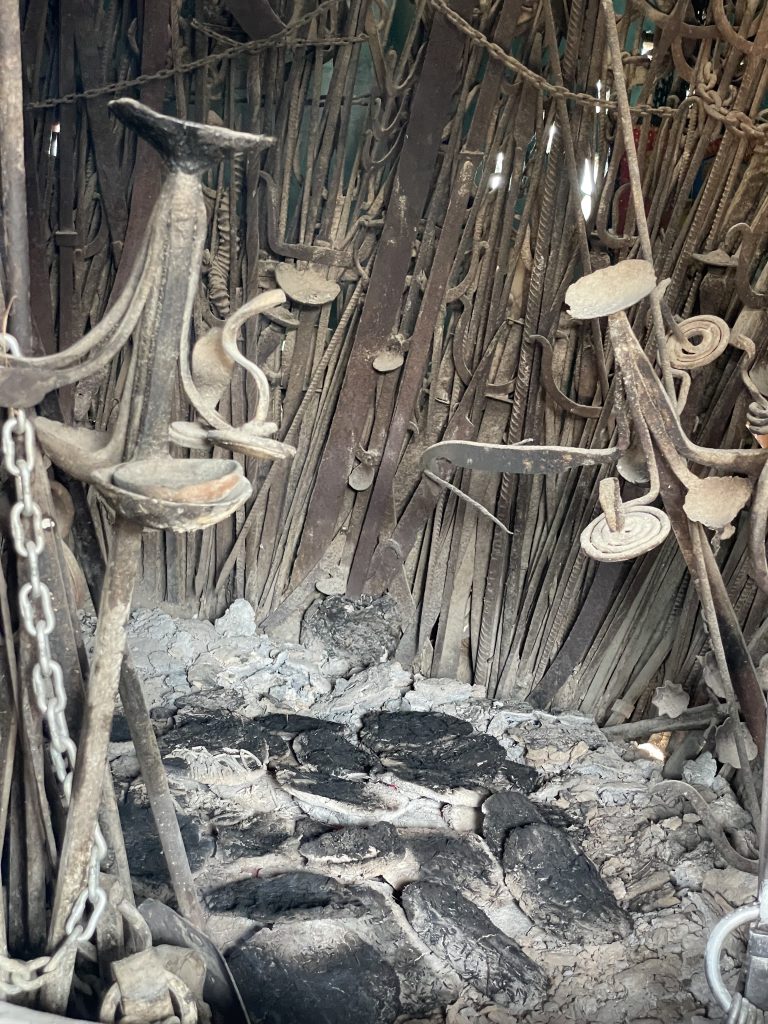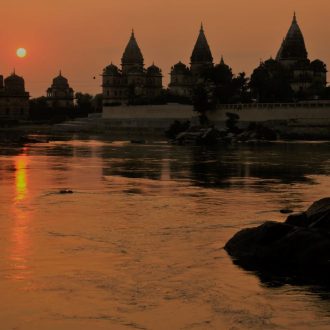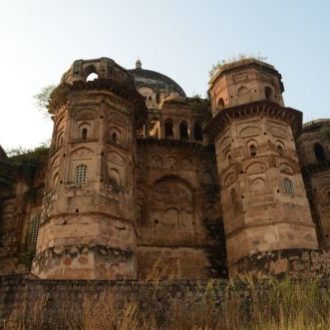Tribes of Madhya Pradesh – A Journey into the heart of India
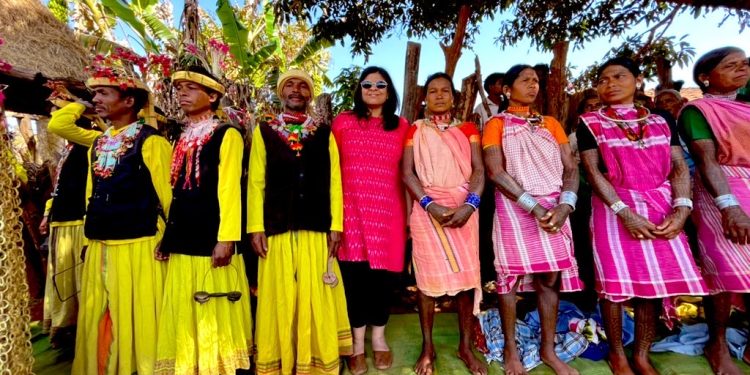
Har Narmadhe ! Rivers are a hotbed of stories. a lifeline to communities. Civilizations have been created and destroyed by rivers. And rivers tell their own tales, even if it’s tragic and mythical. The story of the tribes of Madhya Pradesh also revolves around the River Narmada and our tribal trails begin here, as we journey into the heartland of Madhya Pradesh with Times Passion Trails.
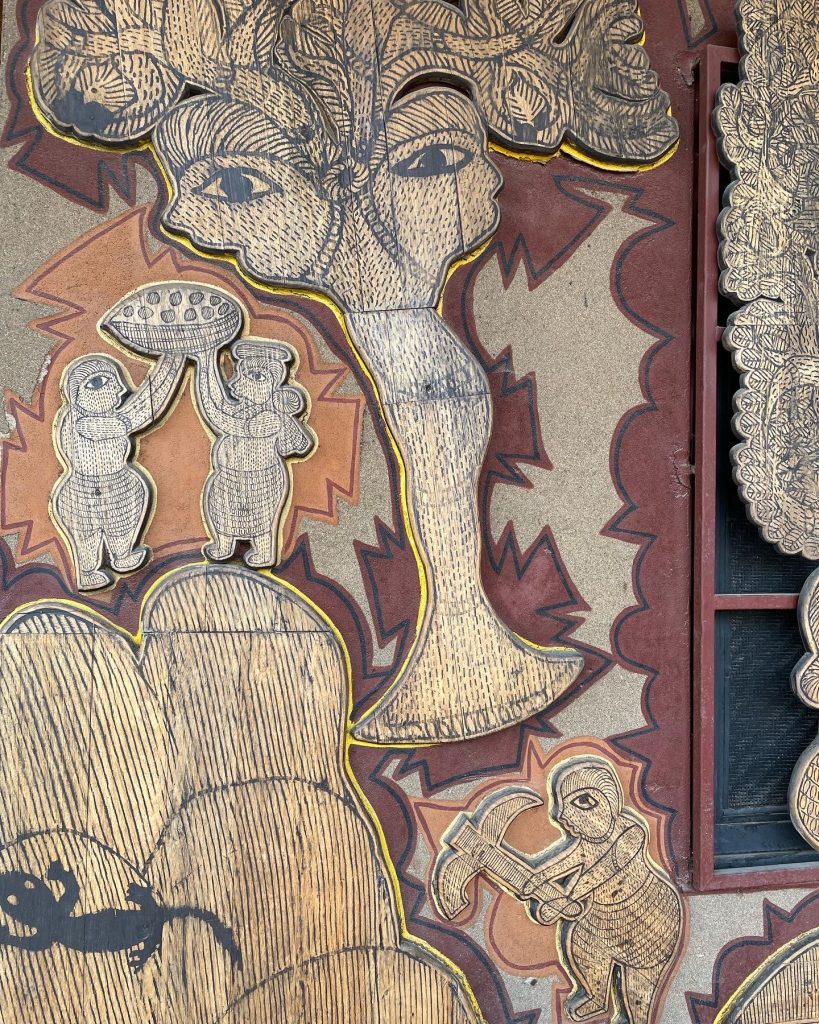
The Story of Narmada River
” The course of true love never did run smooth,”.said William Shakespeare. The course of River Narmada which originates in a little khund in Amarkantak is a tragic love story too. A mythical tale of lost love and friendship, betrayal and sorrow, and yet the strong-willed, beautiful river changes her course from East to West and rebels against the gods and mortals who denied her the destiny that she wanted. When mighty Bheem tried to block her path by placing Lingas on her course, she meanders and disappears and reaches her destiny in the Arabian Sea. Narmada was to marry Sonpatra but it was not meant to be Her childhood friend Jolena went to see the marriage procession, decked as a bride with Narmada’s clothes and jewellery to see the groom. But they eventually fell in love and merged together and didn’t return to Narmada. In fury, Narmada changed her course and found her destiny in the ocean.
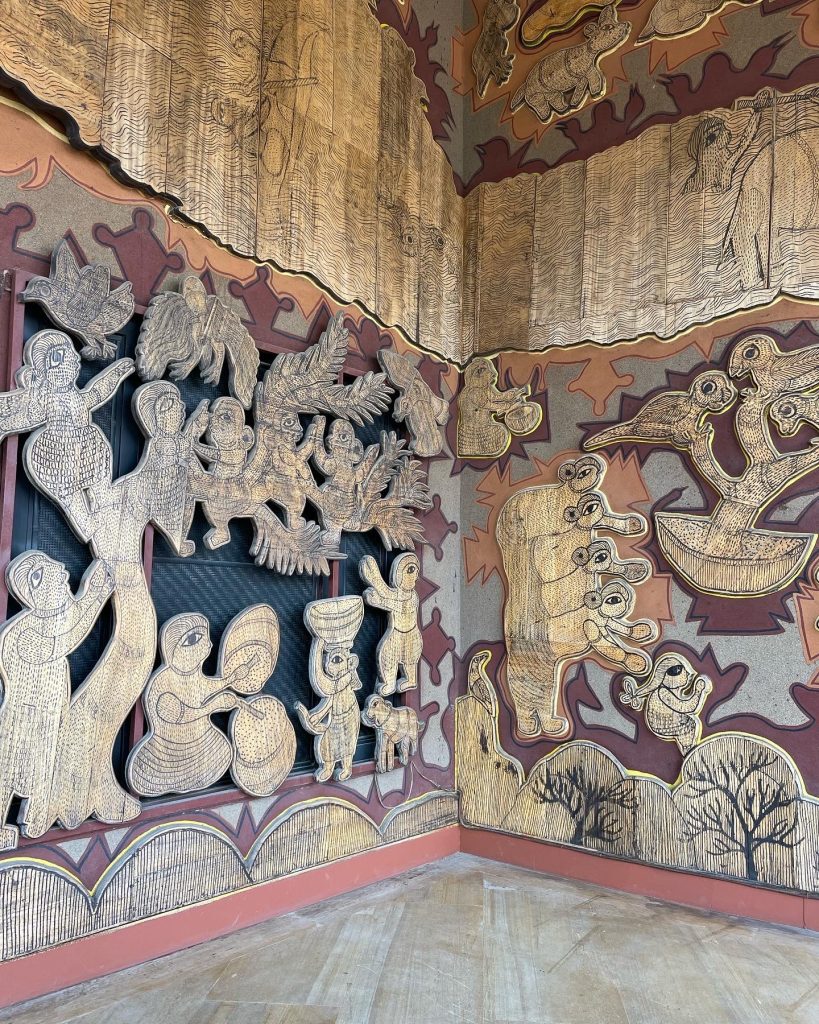
It is only apt that I start my travelogue on the tribal trails with the story of Narmada River who was more than just a travel companion. She was our muse, a motif that journeyed along with us, inspiring us and artists. Stories inspire Art and Art has been inspired by Nature. This is the mural painted by Artist Durga Vyam along with others, right at the entrance of the ethereal and mysterious tribal museum in Bhopal. This is where the narrative begins. The story of the tribes of Madhya Pradesh, their cultures, their myths and legends, their beliefs, and their lives. And their love for the river. This was my first introduction to the #tribaltrails organised by Madhya Pradesh Tourism and Times Passion Trails which took us into the heart of India.
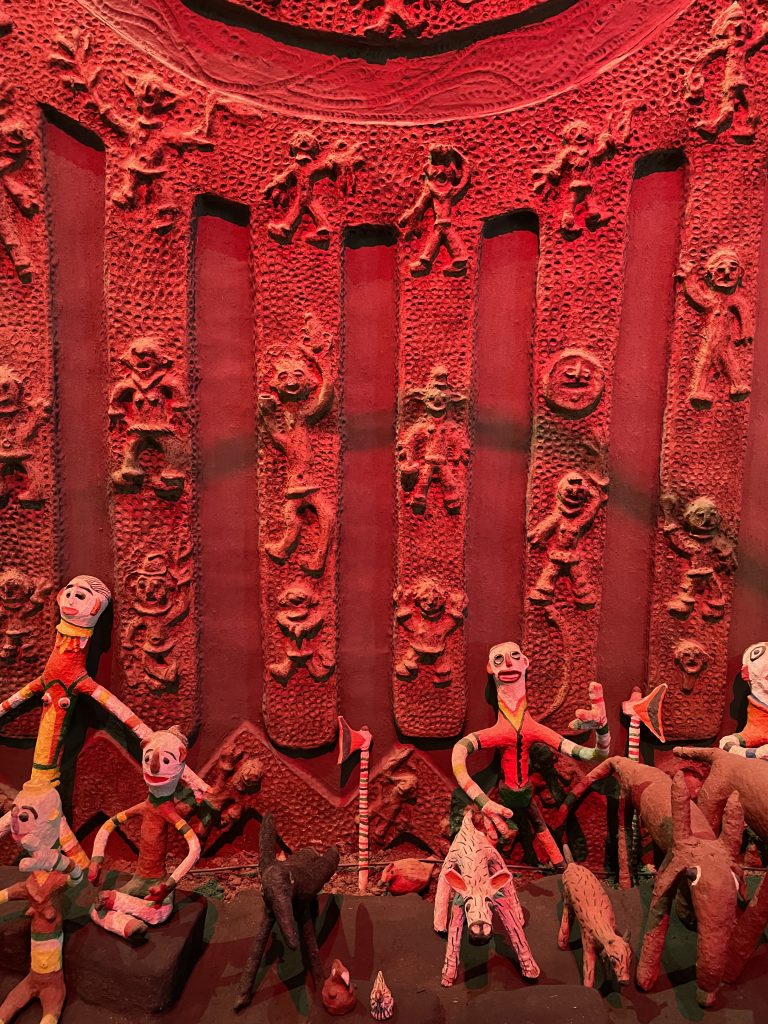
Bhopal Tribal Museum
The journey however began at the Bhopal Tribal Museum, which was a microcosm of the world of tribals. As my eyes got used to the psychedelic lights, I realized that the museum was more than just a regular display of objects. It was an experience. The lighting added to the aura. There was a seamless flow from one gallery to another as the very design lured you into an entirely different universe, where you left your scientific, rational world behind and entered into a land of mysticism. But Bhopal Tribal Museum was not just a curation of tribal beliefs and traditions, rituals and customs. Walking around, I discovered that there were six galleries that gave me a glimpse of their lives, their homes, their cultures, their gods, their marriage traditions and their origin stories. The tribal museum reflected the inner consciousness of their lives in all totality.
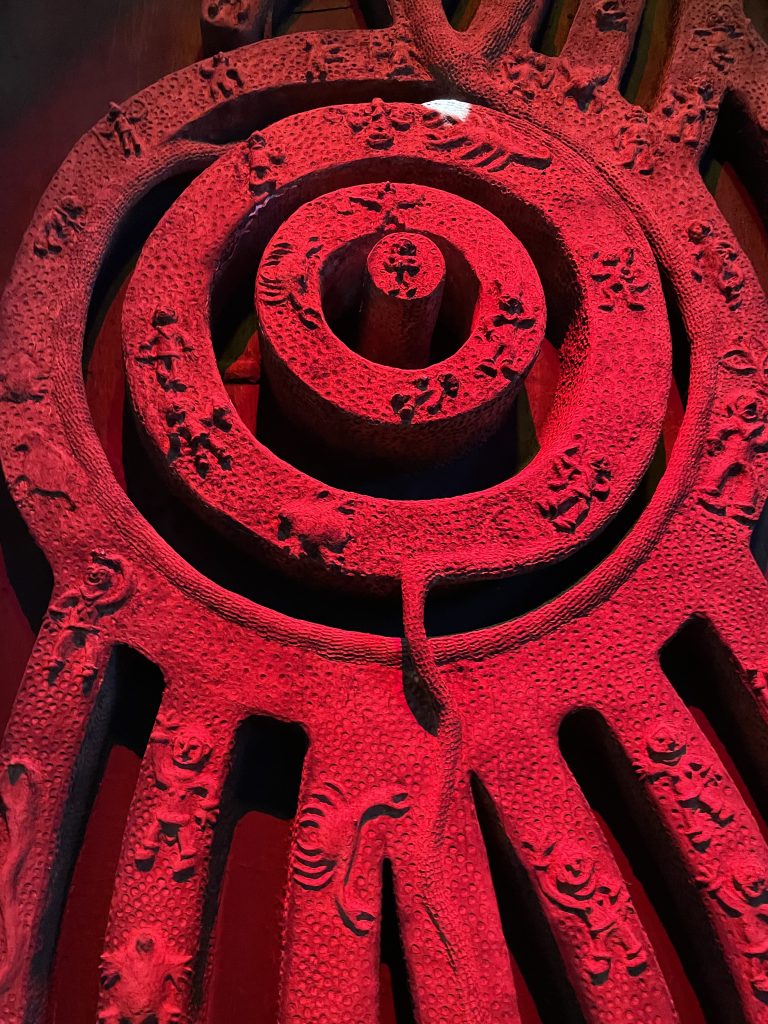
There is more to life and then there is the afterlife. Everything around them is sacred, be it the natural world of rivers and hills, trees and forests while a simple rock or a stick become gods and demigods. This is where the supernatural and the spiritual world blended.
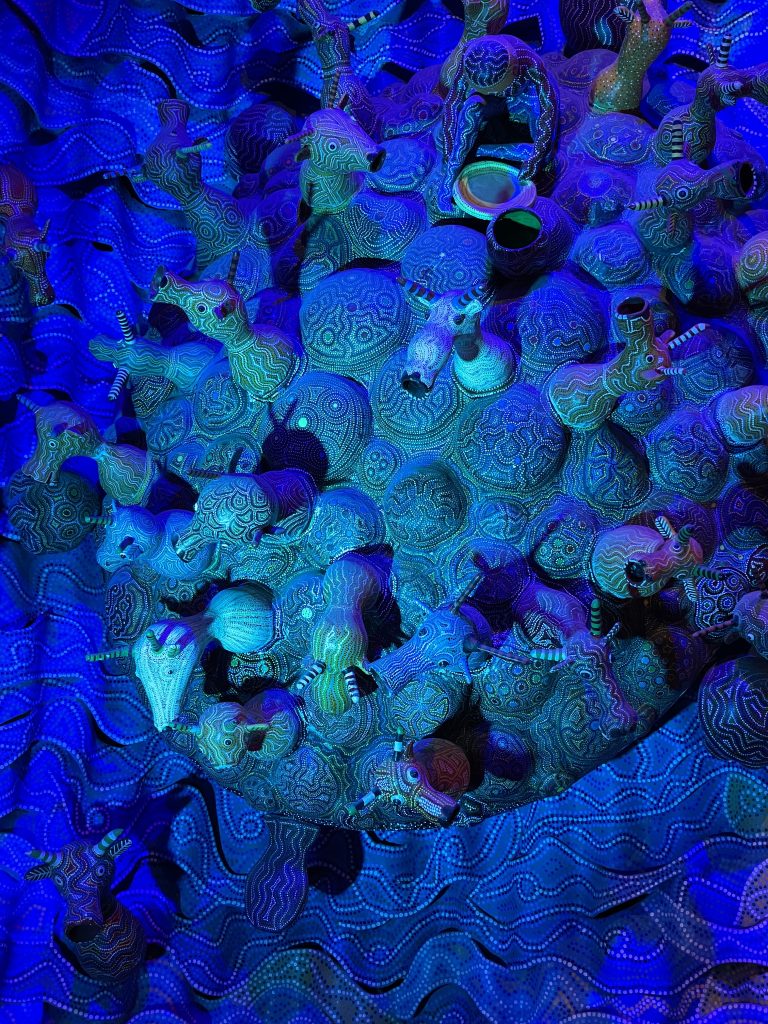
Later, I realized that there was a reason why the tribal museum was the starting point of the trail. It was not just a window to the world, which we were going to explore, but a deeper understanding of their universe with a much wholesome perspective. It is easier for us to dismiss these traditions as primitive myths and rustic beliefs, but is it really? And what are myths indeed? When I was reading about the museum, I stumbled upon this paragraph on the website that hit home. “Myths were not created by man in the manner when he creates art. Myth is not a creation of man, but a part of his unknown, unnamed, collective consciousness. It can also be said that what is achieved in arts through the conscious mind, already exists in its natural form in the environs of myths. ” And what we construe as the simple and obscure matter may have deeper significance for them, “like a roadside stone might possess powers to deflect disasters and destroy their ill effects for that community.” We are lost in the pursuit of development, but we have indeed lost is our own connection to the land we live in, the nature around us, our roots, and our traditions and beliefs which has given them their identity.
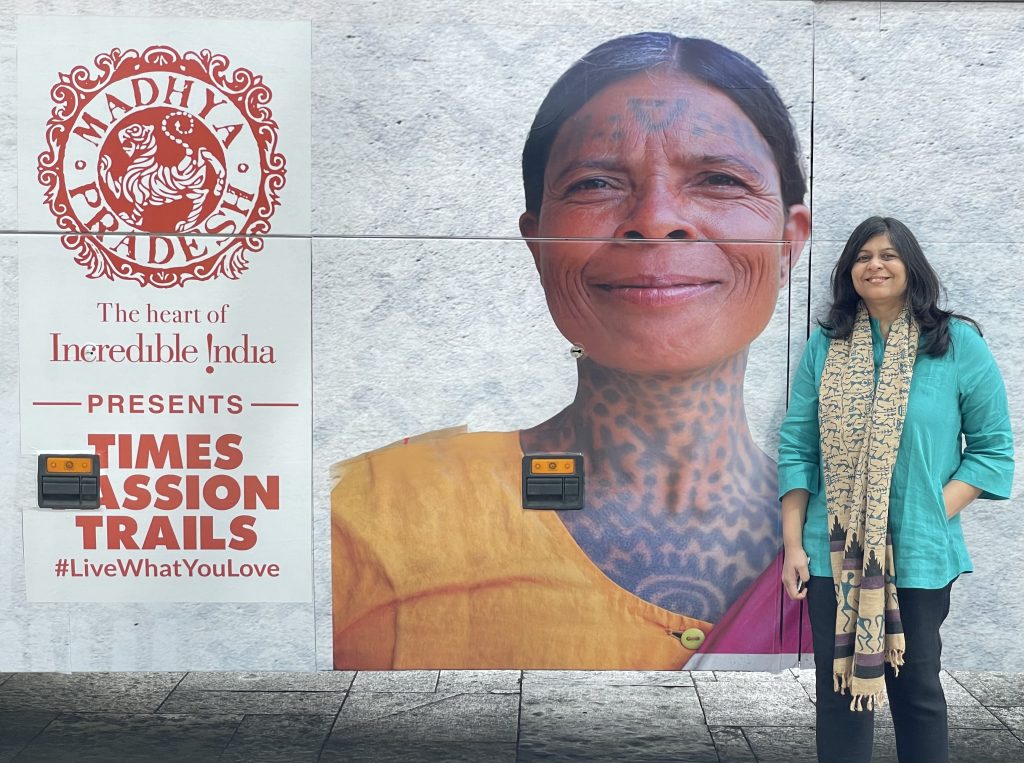
Tribal Trail – Journey to meet the Tribes of Madhya Pradesh
And on that note, the journey began to meet the tribes of Madhya Pradesh. Thirty of us were huddled inside a bus, with the striking face of Chotti Maa, a graceful Baiga woman as our mascot printed on it, and we meandered our way into valleys and villages in remote Madhya Pradesh. As we drove from Bhopal to Jabalpur, we visited Tamia, Mandla, and Amarkantak and interacted with the Bharias, Baigas, and Gonds, tribes of Madhya Pradesh in villages around Patalkot, Silpidi, and Patangarh. We explored forts and visited temples in Mandla and Ramnagar and even had a glimpse of the supernatural and learnt about exorcism, the tribal way at Chaugan, a village near Mandla. We stepped foot into the gateway to mythical Patallok but also saw the stairway to heaven.
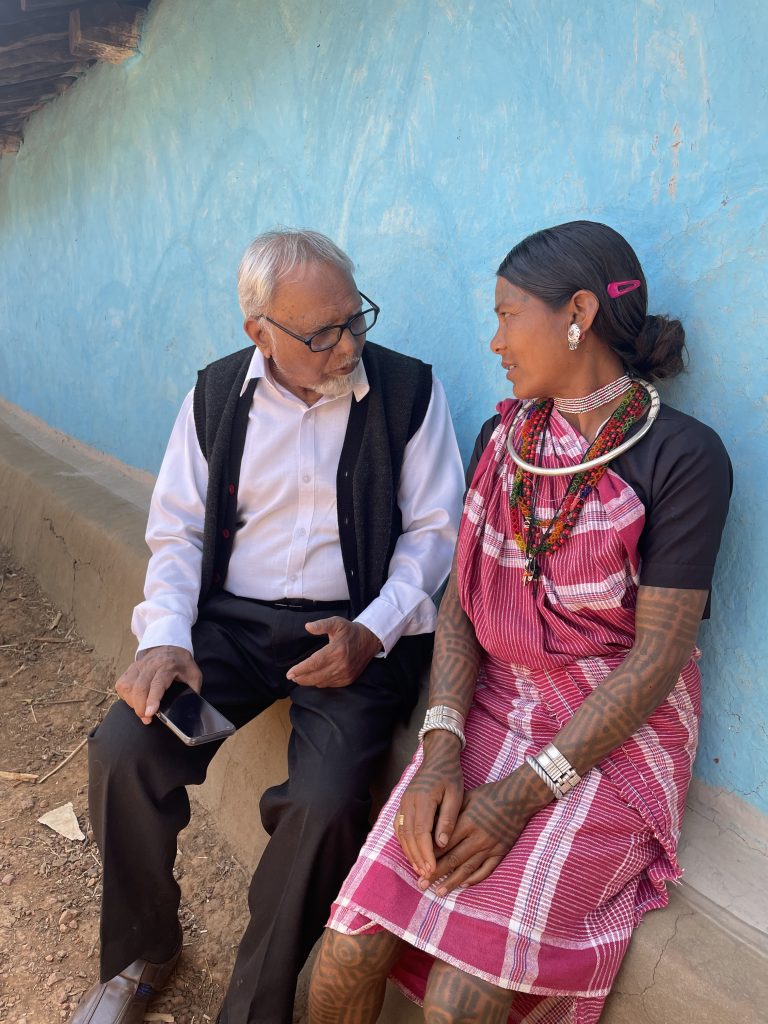
And we were grateful to have had Dr. Vasanth Nirgune Sir as our “Experience Architect, ” who is a walking encyclopedia on the tribal way of life and has spent years living with the tribes of Madhya Pradesh. The opening ceremony was special with the many dignitaries on stage and as the inauguration was by the Governor of Madhya Pradesh, His Excellency Shri Mangubhai Patel. And the highlight was the performance of the maestro, Teejan Bai who took the stage by storm. Awarded the three Padmas, she is an exponent of the Pandavani and she enacted scenes from the Mahabharata. And it seemed to be the perfect note to embark on this tryst to meet the tribes of Madhya Pradesh.
At Patalkot Valley to meet Bharia tribes
We left Bhopal only to plunge deep into the recesses of the earth, into the mythical and mysterious Patalkot, a horse-shaped valley surrounded by hills, carpeted by medicinal herbs and plants, and home to a handful of tribal villages huddled next to each other, inhabited by Bharia tribes and Gonds. Our tryst with the Bharia tribes of Madhya Pradesh started with this hidden valley.
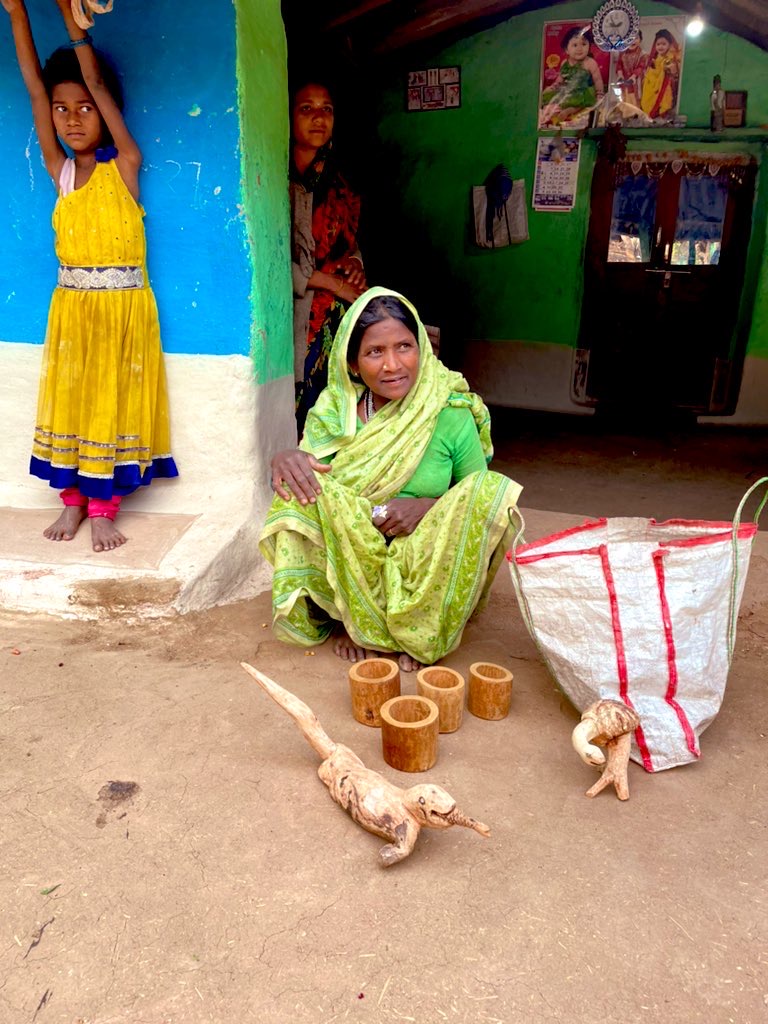
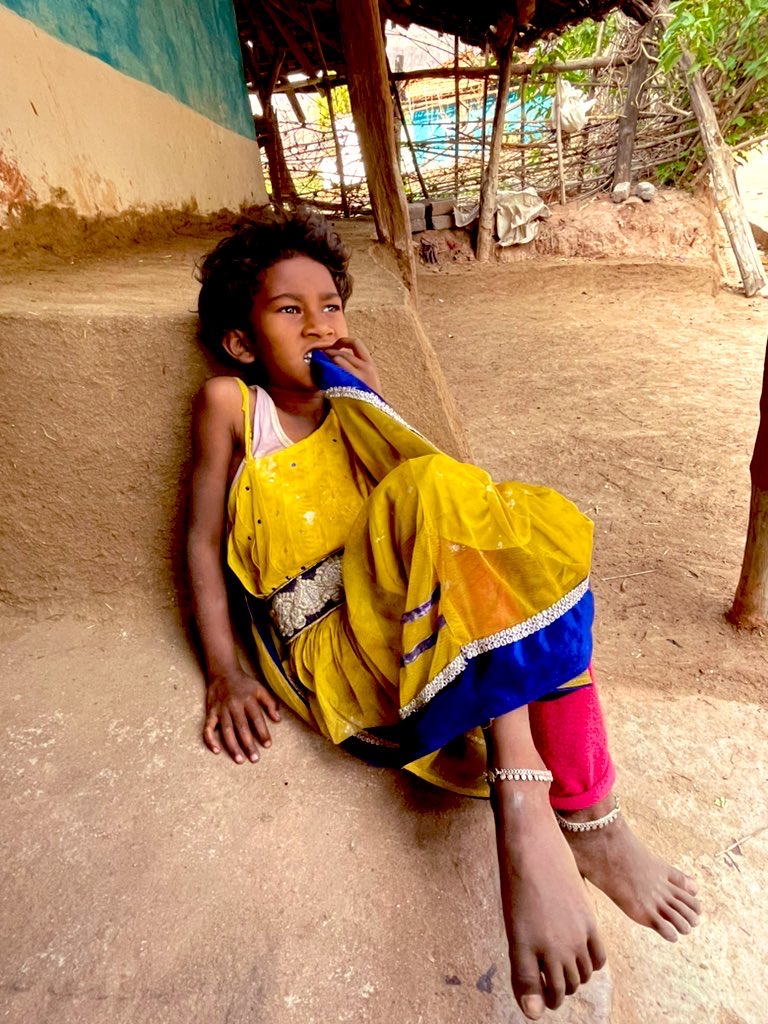
The medicine men visited us at our campsite at Tamia, with their expert knowledge of herbs and spices, powders and potions that can heal anything from the common cold to aches and pains, indigestion to allergies, depression to diabetes. The traditional healers or Bhumkas as they are called have a cure for every ailment, extracted from nature.
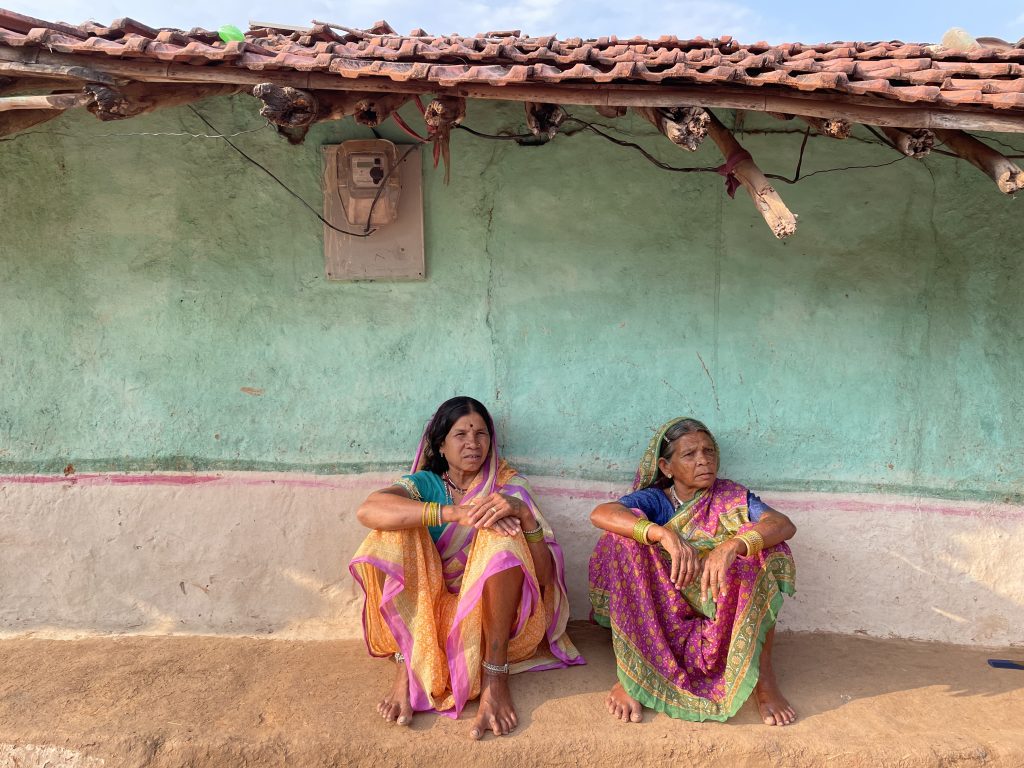
Patalkot is indeed steeped in mythical folklore as it was believed to be the haunt of Meghnad, son of Ravana who they worship apparently and the Patalkot valley was believed to be their portal to Patal-Lok. As we visited Kharyam, one of the last villages, we understood why it was called Patalkot. It was early evening but the hills wrapped the village in its fold, literally shutting out the light.
The Bharia tribes who live here however were warm and hospitable, opening their doors to us and giving us a peek into their lives, which gave us the true meaning of sustainability. ” Jungle aur Pahadon mein rehne ke liye, hamein aur kya chaiye.” Simplicity is a way of life. Less is more. Natural resources are not exploited. “We have what we need.” Later at the campsite at Tamia, we met the men again when they danced for us and sang songs narrating more legends.
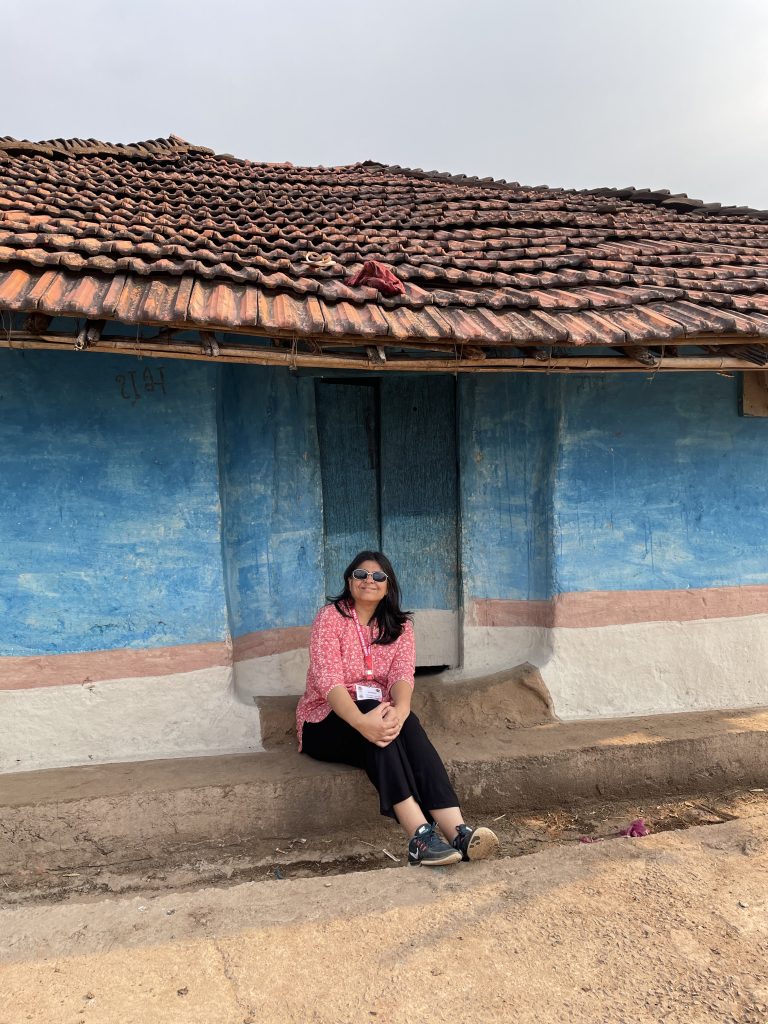
Mandla Fort- Bastion of the Gonds
We heard more stories of the tribes of Madhya Pradesh as we continued our journey to Mandla, one of the historic regions of the Gonds. Amidst the melee of the colourful market we saw a large banyan tree where 21 freedom fighters were martyred during the 1857 War of Independence against the British. However, a statue of the valiant Rani Avantibai paid a tribute to the courageous queen who led a victorious army against the British around the same era. While history books have largely forgotten her, she remains however immortal in the folklore of the Gonds, one of the prominent tribes of Madhya Pradesh. Mandla had a historic tryst with them.
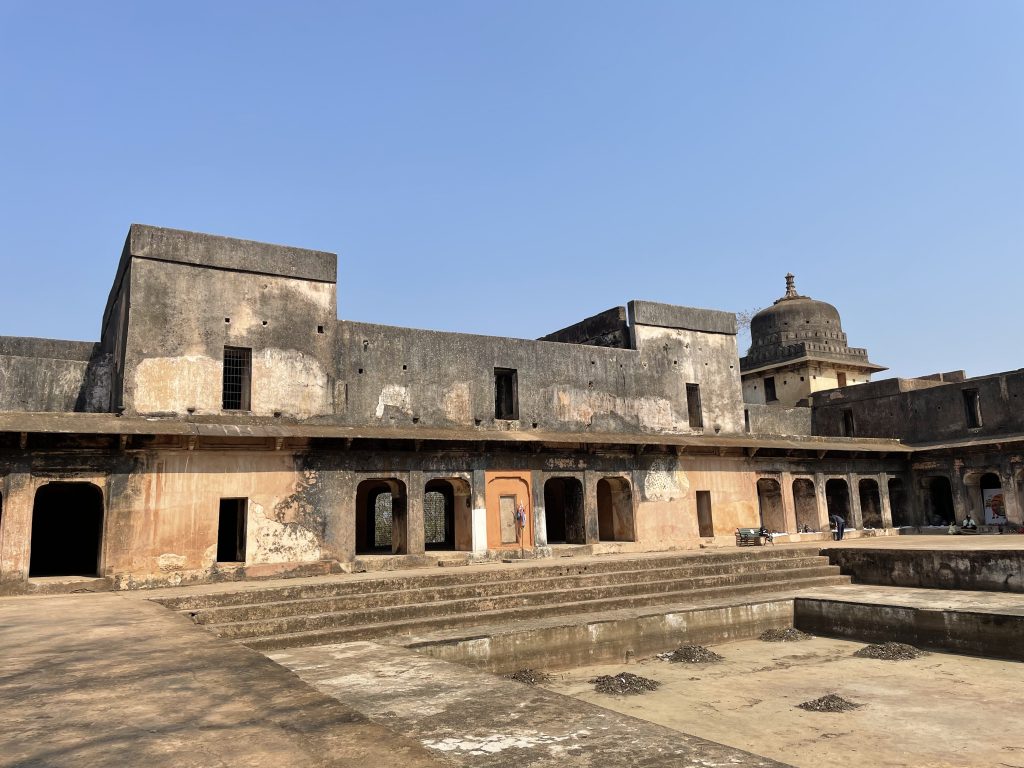
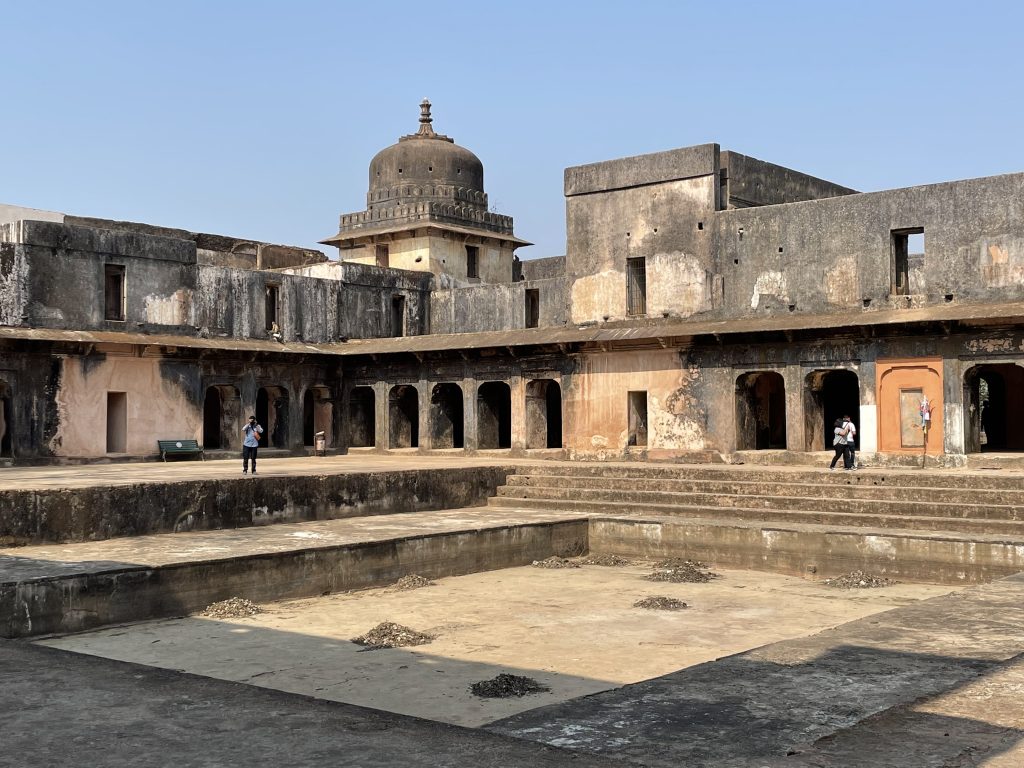
The entire region around Mandla was once ruled by Gond kings and we visited the 17th century Moti Mahal, also referred to as Ramnagar or Mandla Fort built by the Gond Ruler Hriday Shah. While we walked around the majestic fortress, we were treated to a lively performance by the nimble-footed dancers as we tried to match their rhythm with our steps. An open exhibition of their arts and crafts was curated for us inside the Mandla Fort as we tried our hand at pottery while interacting with the artisans.
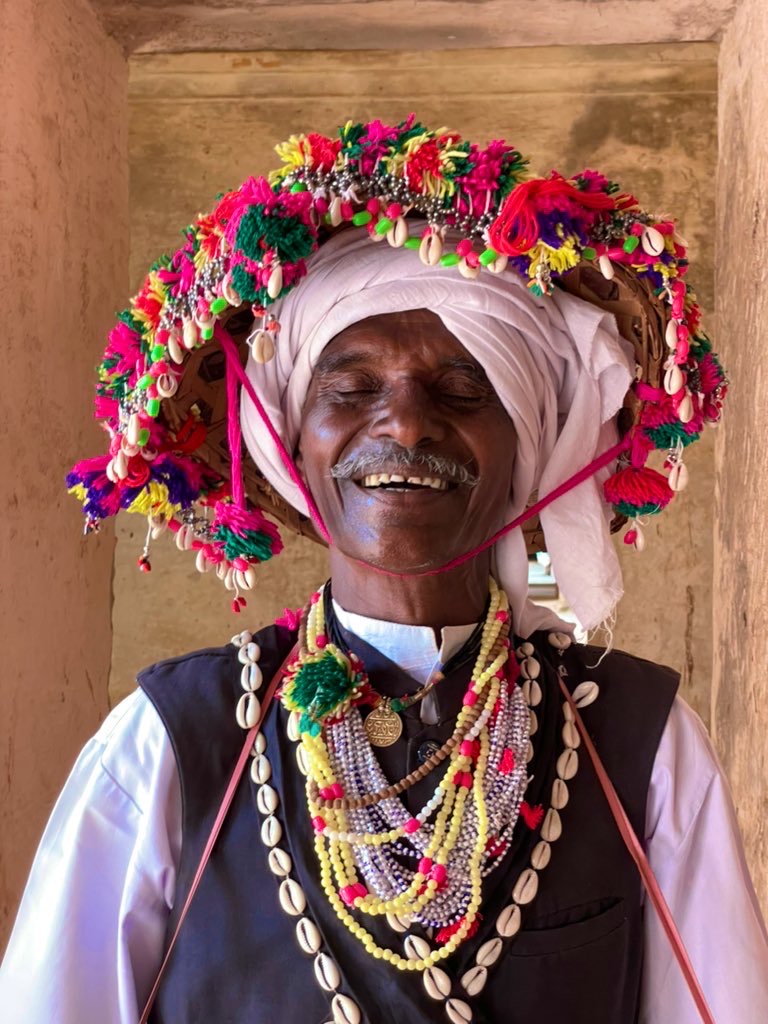
Chougan Temple, where supernatural and spiritual worlds meet
Mandla for me was a treasure house of stories. The dusty but colourful town located on the banks of the Narmada revealed its legends through ancient temples and monuments. At the Raja Rajeshwari temple, we saw ancient idols carved by the Gonds, based on the way they had perceived these deities.

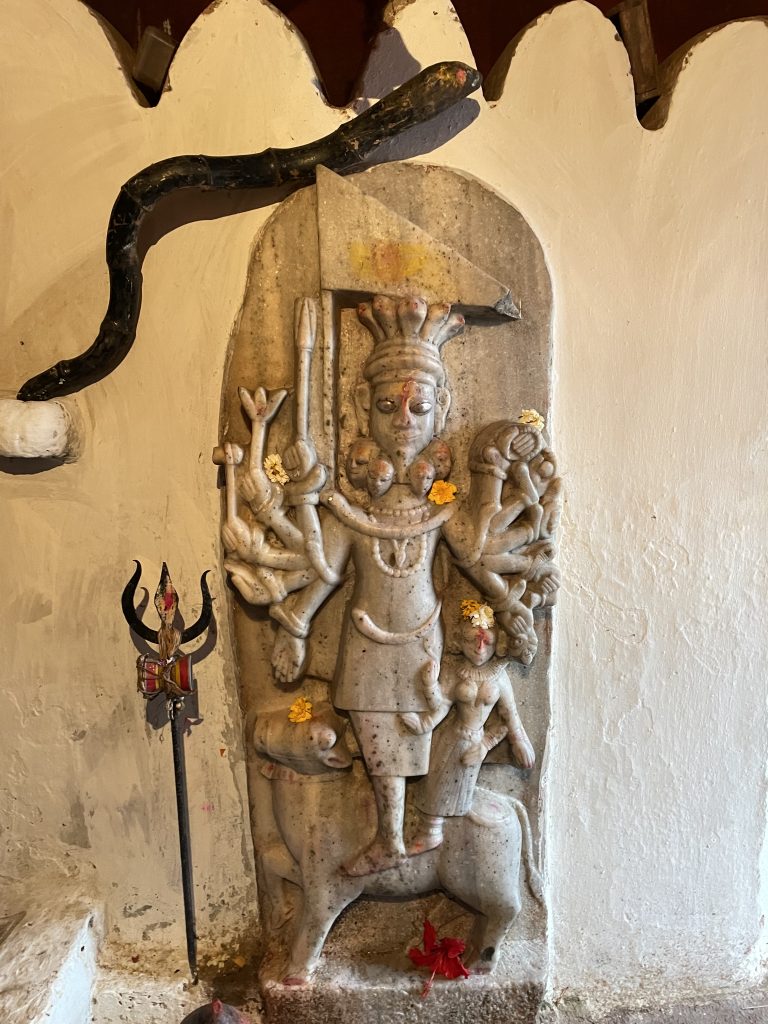
However, the tribal beliefs came alive in a little village called Chougan, where supernatural and spiritual energies and forces blended. Almost every Monday a ritual takes place in this “temple”. There are no deities, mantras or prayers, or priests in this Chougan temple. All there is a stairway to heaven and a ladder believed to be the home of the Goddess Kali .
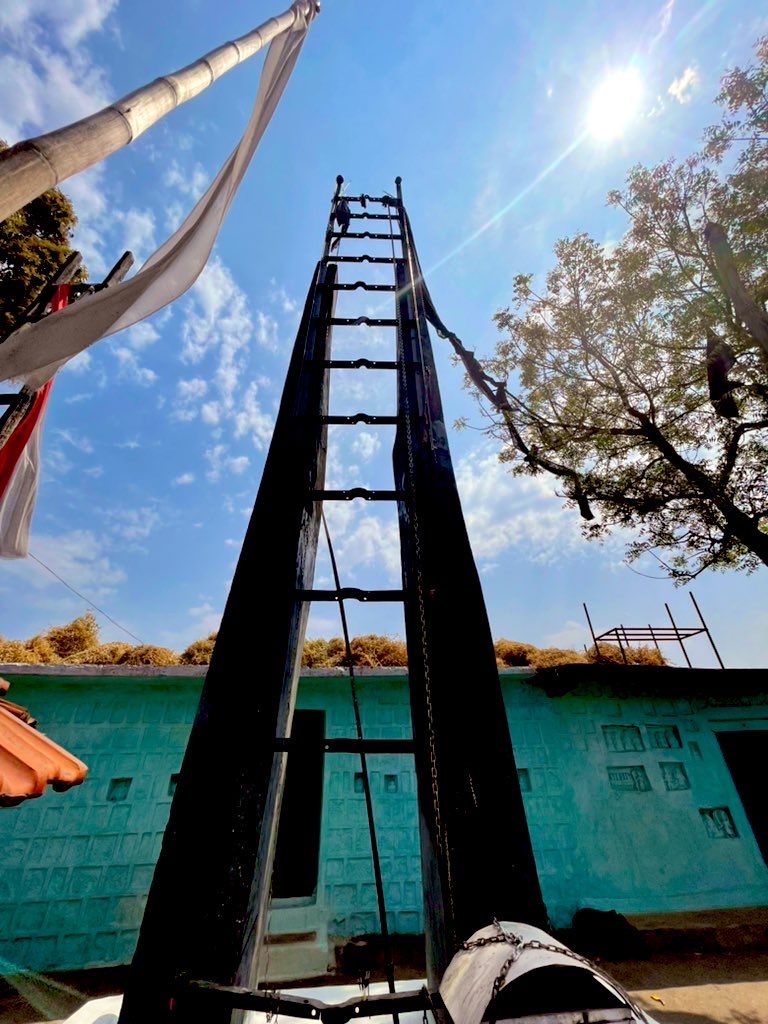
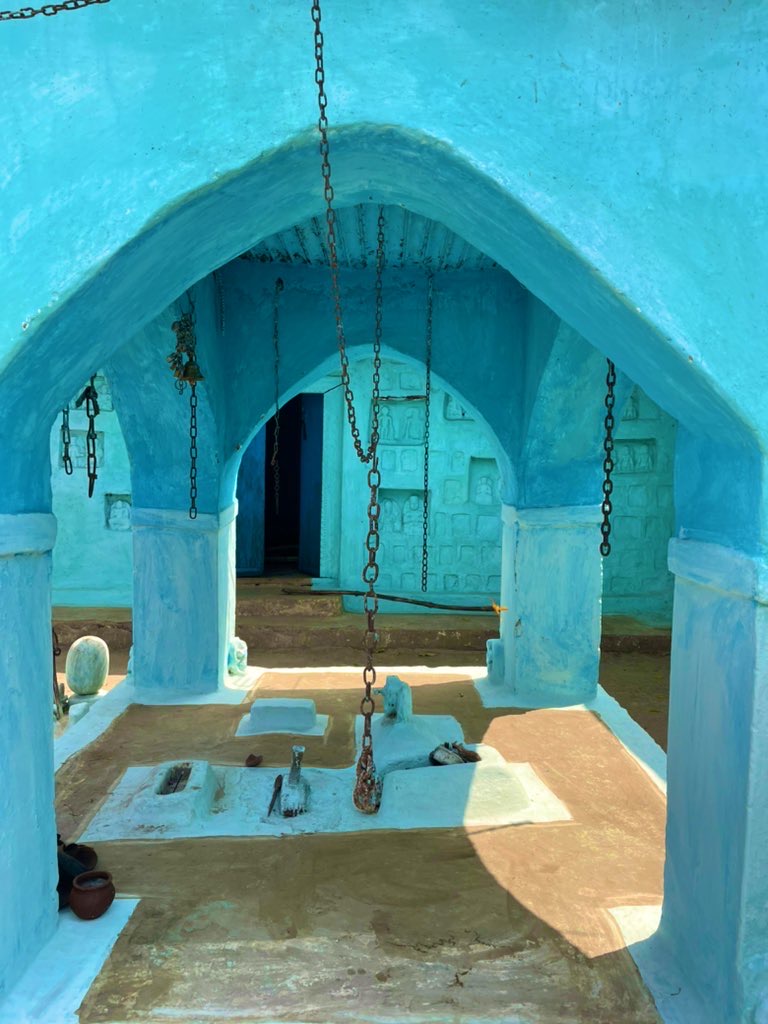
People believed to be possessed by evil spirits come here to be liberated by the spiritual powers of an exorcist. Parents who have no children or who deal with health issues come here to be blessed as well. At the tribal museum at Bhopal, I learnt that the ladders are called sarag naseni, and it is where the deities dwell. The priests or exorcists who climb the ladders are believed to be possessed with spiritual powers, which is how they are able to exorcise the demons

Meeting the Baiga Tribe of Madhya Pradesh
Tribal beliefs may be rooted in symbols and our rational minds may not understand the mysticism, but every ritual has a deeper meaning and a connection to their roots and identities. And that is what I learnt when we met the beautiful Baiga women in Silpidi. Finally, we met the mascot of our trail – the ever-smiling Chotti Ma who along with her friends from the village showcased their fascinating tattoos to us, as they were inked from head to toe.
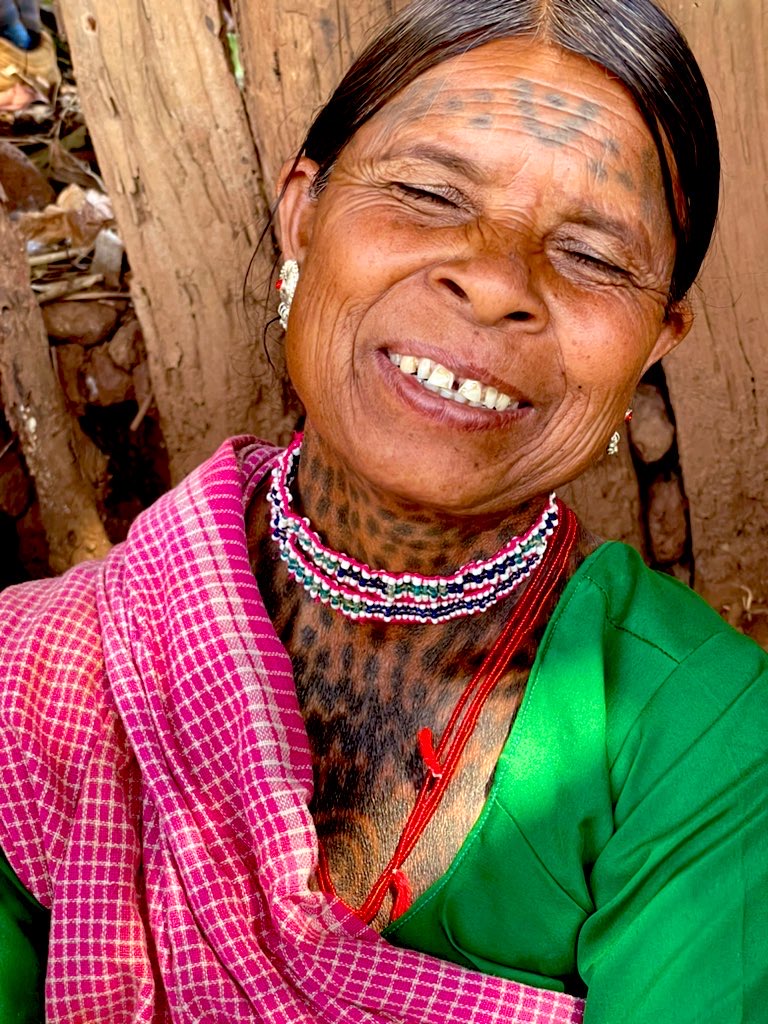
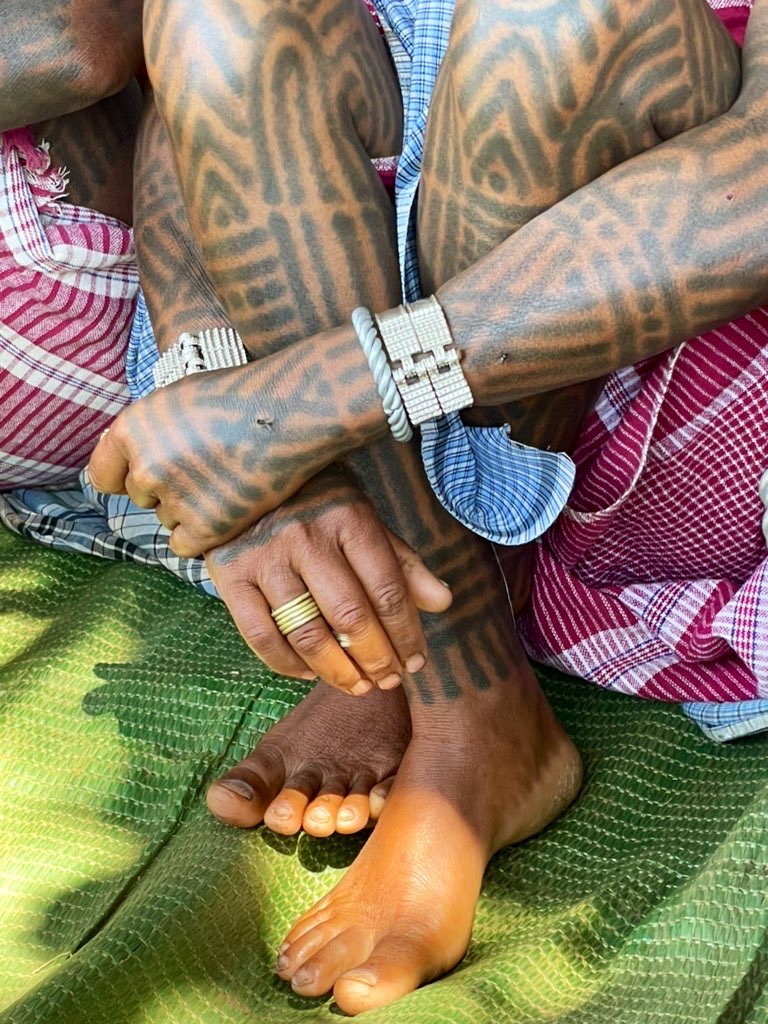
For these women, the tattoos are their identities and are symbols of their tribe. It is also their way of dedicating their bodies to the Gods and showing their gratitude. Their first tattoo is on their forehead when they are barely 12 years old and then their arms and legs are inked, followed by their backs. Every tattoo is significant and has a story attached to it.

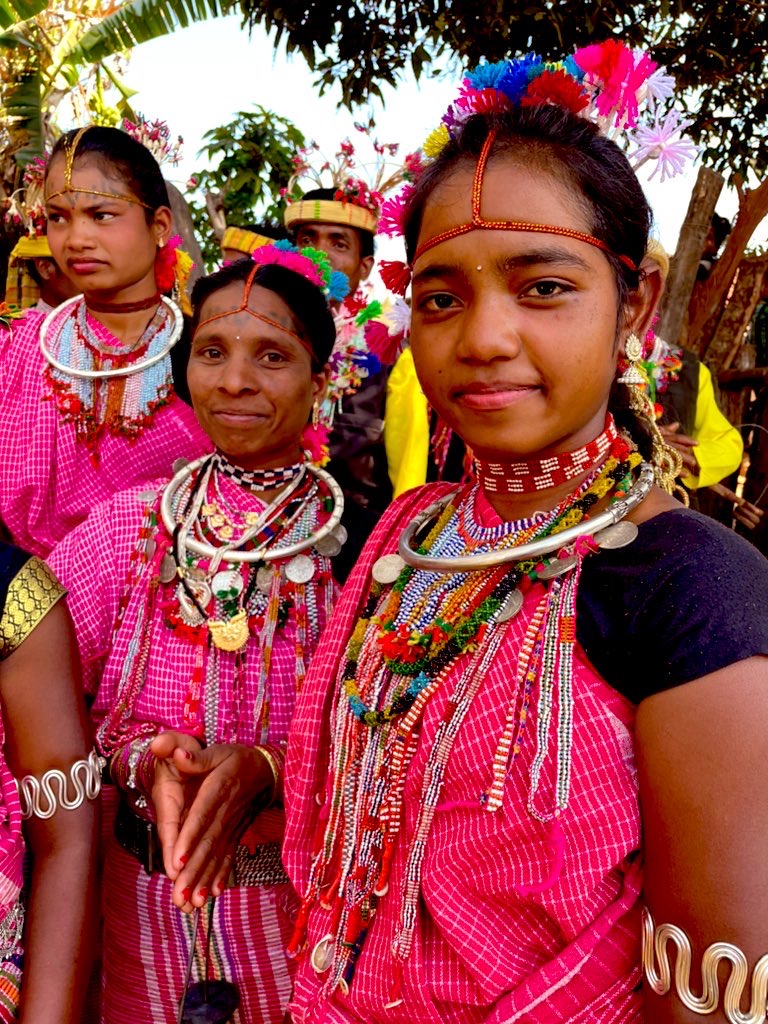
The tattoo on their chest for instance is inked when they become mothers as it stands for fertility. As we spent hours talking to them, listening to their stories, we were treated to another round of music and dance while the entire village came out to greet us, dressed in their finery.
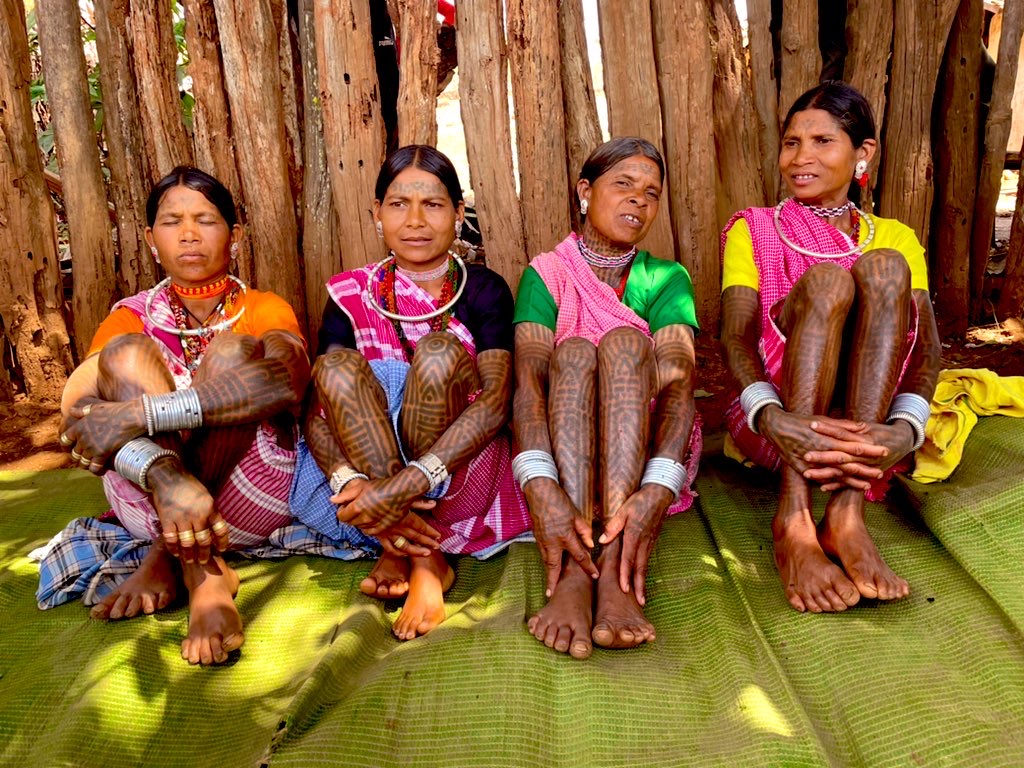
Lost in the hues of Gond Tribal Art
When we speak of colour and art, we think of the Gond Tribal Art. Every inch of walls to ceilings was painted with stories and the vibrant colours splashed on our faces. Birds flew out of the canvas, the jungle book came alive, trees and flowers told their own tales, mermaids swam with fish in ponds and there were deities everywhere. In Patangarh, we felt like we were lost in a colourful carnival where the artists and artisans mesmerised us with their art.
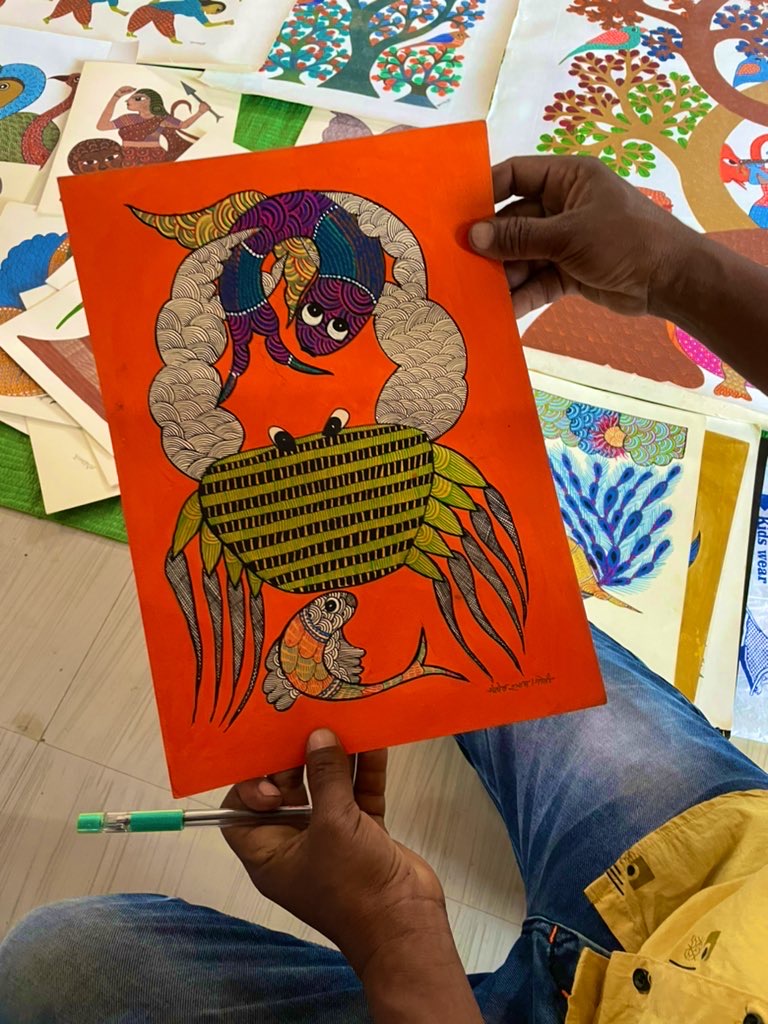
As pantheists and animists, Gond Artists draw their inspiration from the natural world around them and each painting tells a story with their traditions, beliefs, culture, and lifestyles etched into them. The signature style of each artist lies in the detailing and the art is created around finely drawn lines. Dots, dashes, and these lines create a sense of movement in the painting, while the striking colours and tales of the Gond Tribal Art take you into a different realm.
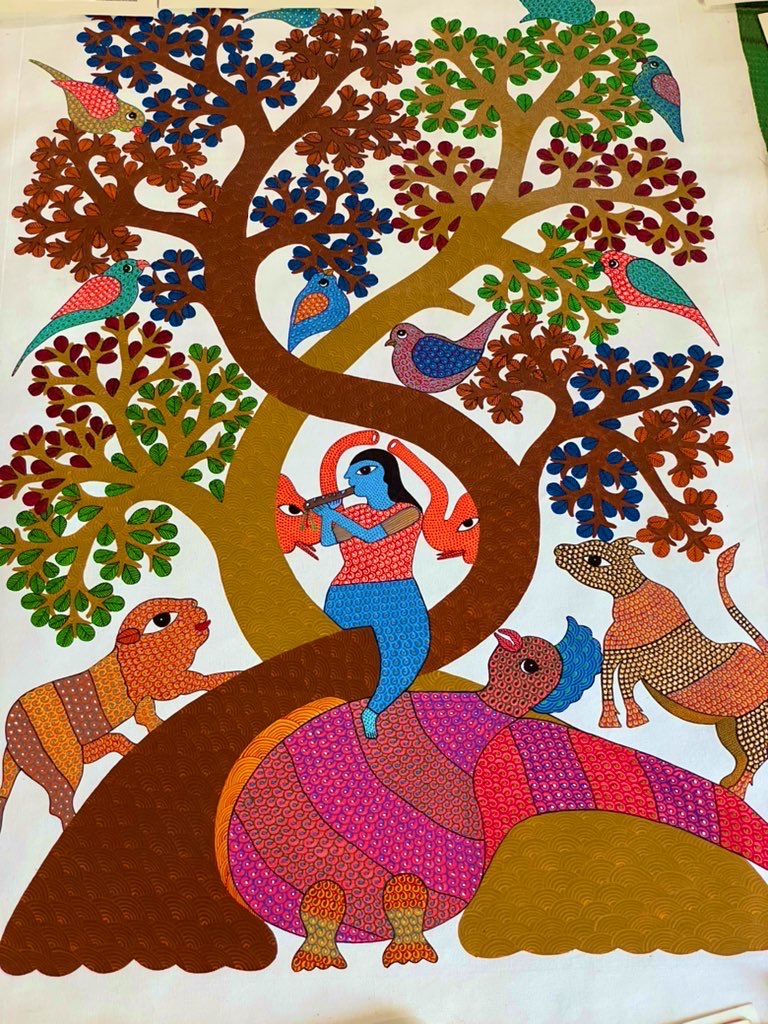
The journey ends where Narmada begins
We stayed in exquisite tented camps managed by MP Tourism in Amarkantak when we journeyed to the twin villages of Silpidi and Patangarh to meet the Bharias and Gonds. Amarkantak however had a divine aura around it with several ancient Hindu and Jain temples around it. The Vindhyas and the Satpura mountain ranges meet, only stitched together by Maikal Hills. But it also home to the very river, Narmada that had flowed with us throughout the journey. And it was only apt that we ended our journey where she began her life, in the little khund.
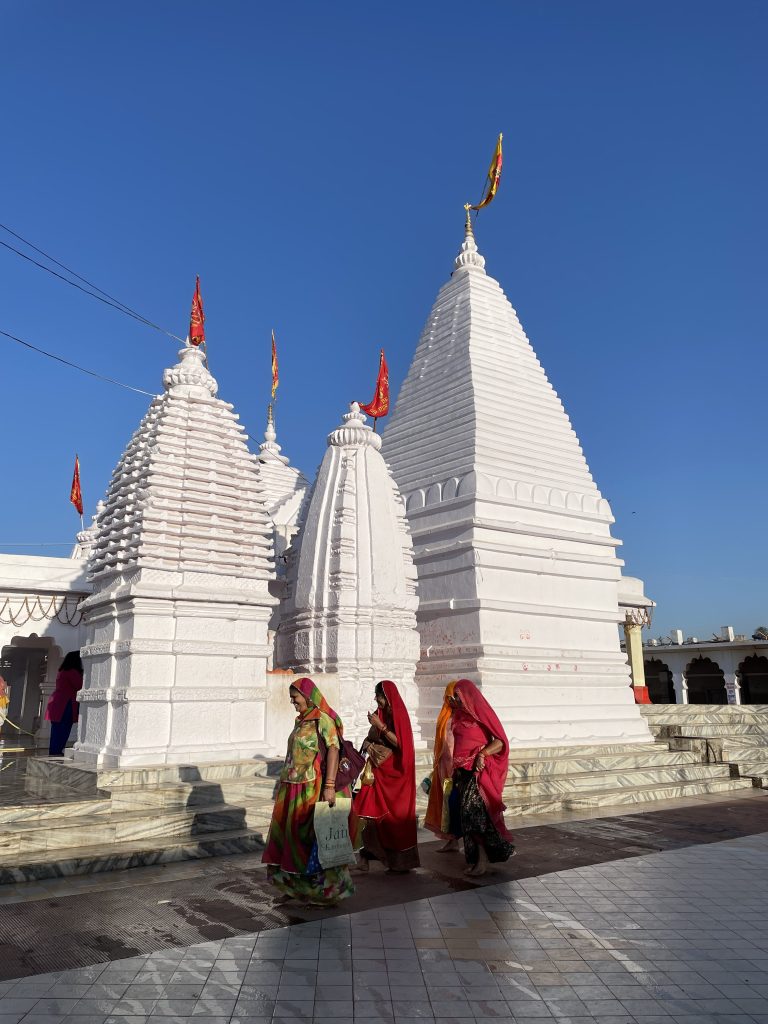
The morning sun reflected in the waters. The Son and Jolila also orinate and meet here and flow together, but only in the opposite direction to the Narmada. Standing there, I felt a sense of deja vu. Somewhere the stories of the tribes of Madhya Pradesh had blended and flowed with the story of the Narmada River, which was their lifeline. I stood there for a while, lost in my own reverie, wondering how many more stories are there, waiting to be discovered.
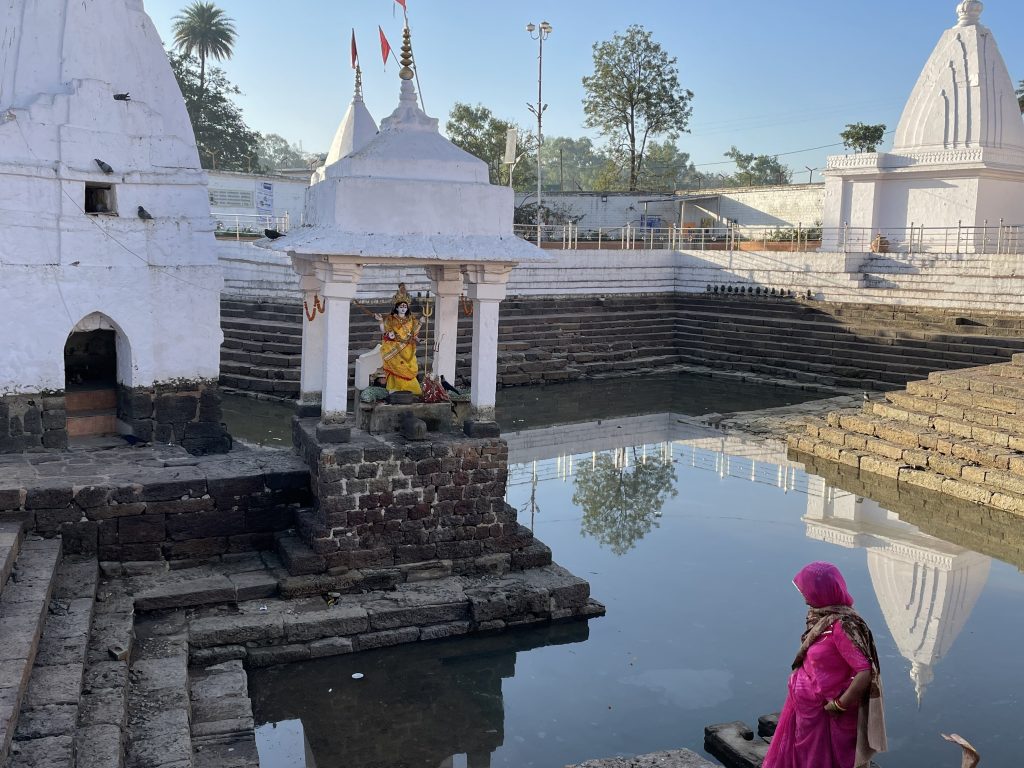
Epilogue – Fact File
Well, the journey didn’t end with Amarkantak. We flew out of Jabalpur and I had to have my final tryst with Narmada, on an impromptu river cruise as we saw the shimmering marble white rocks reflecting in the waters, taking different forms and shapes, teasing our imagination and creating illusions.
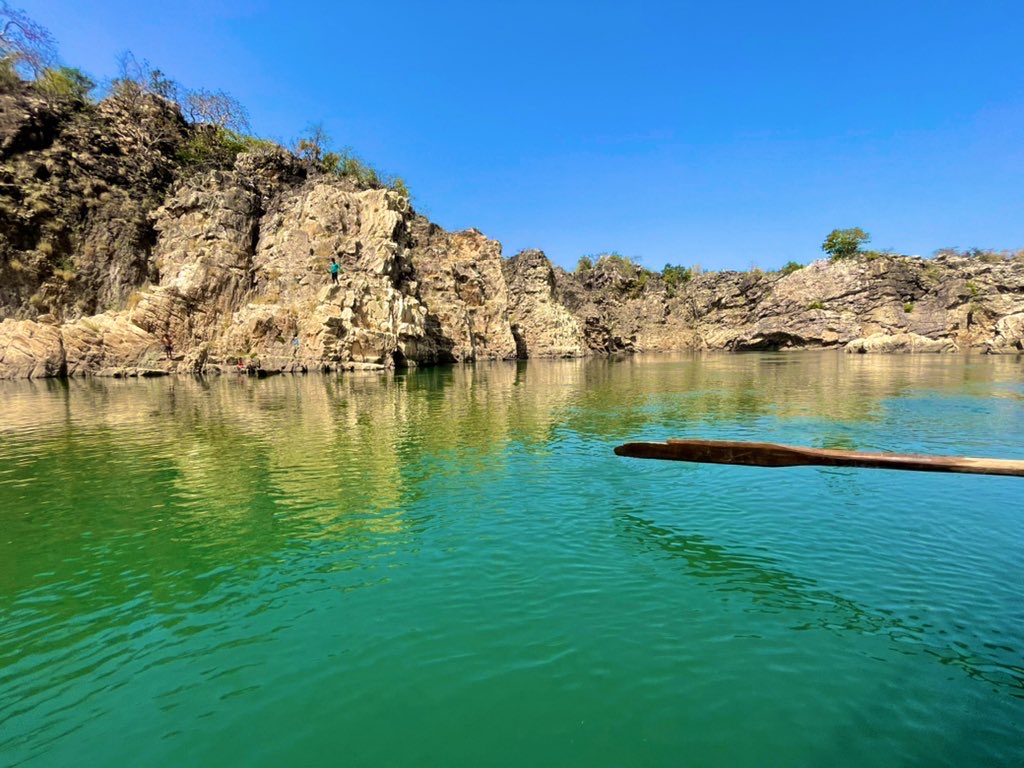
The entire journey was for a week as we drove from Bhopal to Jabalpur and our ports of halt were at Tamia, Mandla, and Amarkantak and we journeyed between 100-200 kms every day to meet the various tribes of Madhya Pradesh. Along the way, we stayed in some of the best hotels. On the opening night, we were at Taj Lake Front at Bhopal, where we first got a flavour of the tribal designs and local art and craft which was integrated with their interiors and decor.
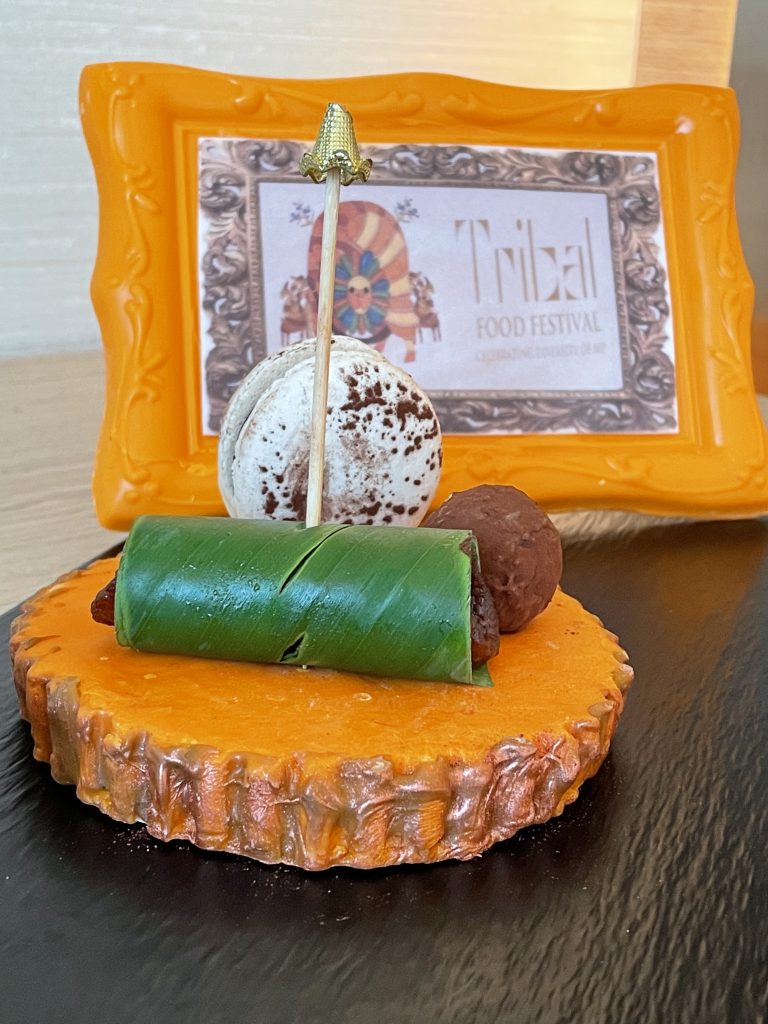
We were also treated to some delicious tribal cuisine as a special menu was curated which was a blend of cuisines from different tribes of Madhya Pradesh. I tried the vegetarian cuisine, including Tamatar Badi, a specialty of Baigas, Thetra Rabdi, and Dahi Ki Mirchi which was from Bharias and Putu Pihri of the Gonds.Throughout the journey, we stopped at several local eateries, mainly managed by the local government and tourism board where we were treated to delectable local fare.
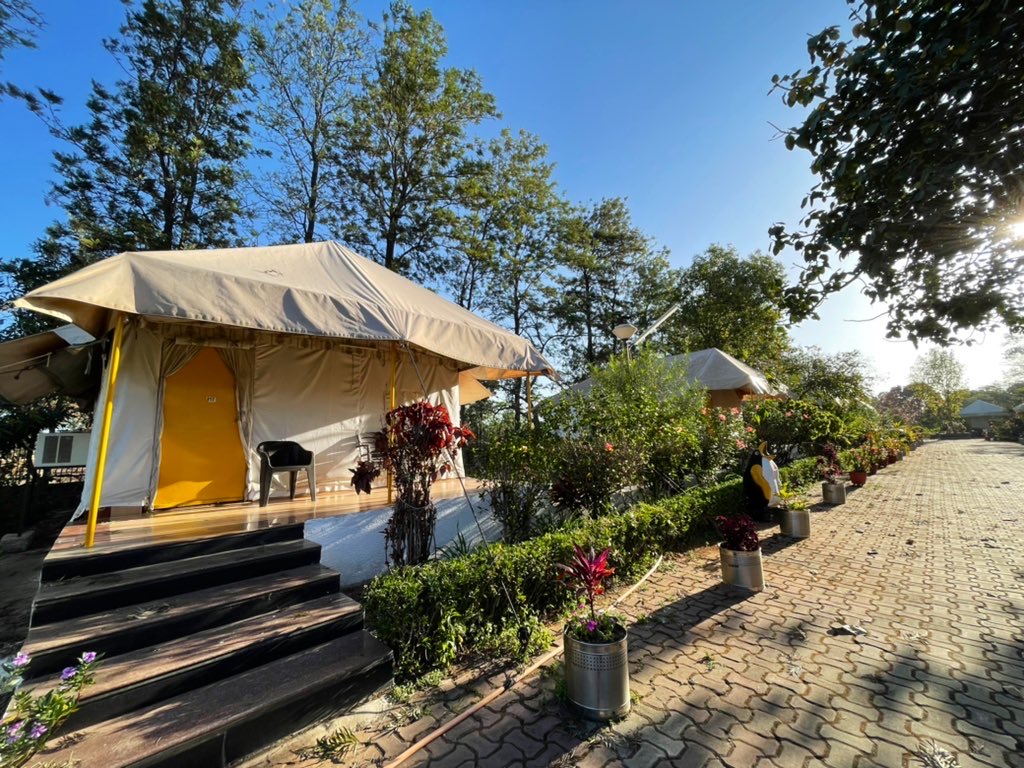
The tented camps at Tamia and the MPT Holiday Home at Amarkantak were very comfortable. Nestled in nature, we felt refreshed in the verdant landscapes. The hills and valleys of Patalkot were a treat to the sleepy eyes as we gazed upon them for eternity from the viewpoints. The hotel, Shikar Palace in Mandla was basic and simple but very clean. We had a lovely stay at Shawn Elizey at Jabalpur where the trip came to an end. But every experience was special .
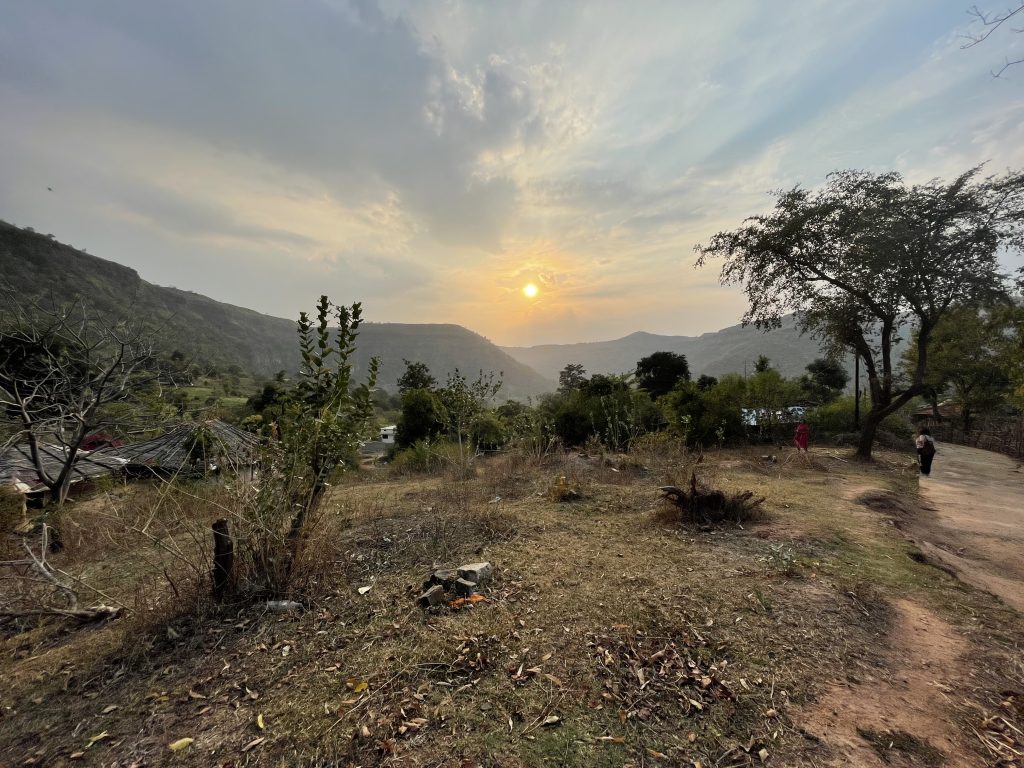
Notes on interacting with Tribes of Madhya Pradesh
There are over 650 tribes in India and 45 recognised distinct tribes in Madhya Pradesh, of which the Bhils and the Gonds constitute the maximum number. In this tribal trail, we met Bharias, Baigas, and the Gonds and tried to get an understanding of their cultures and traditions. The one thing that I do take home with me from my interactions with the tribes of Madhya Pradesh is to live simply and sustainably and live closely with nature and not to exploit her resources in the name of development.
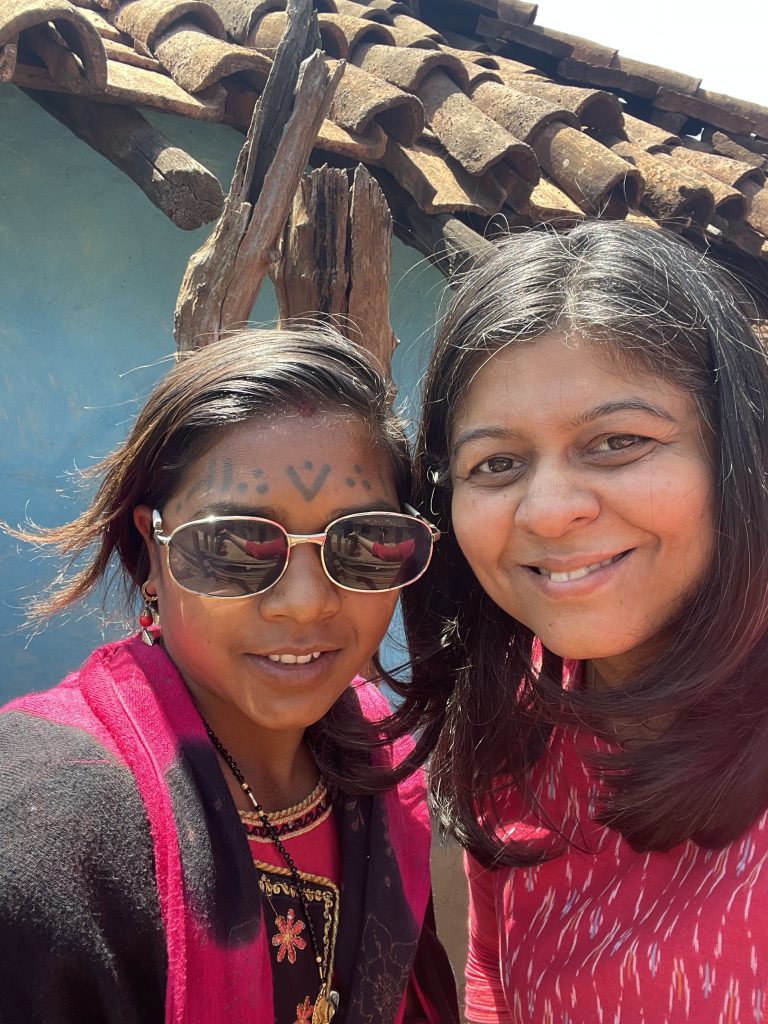
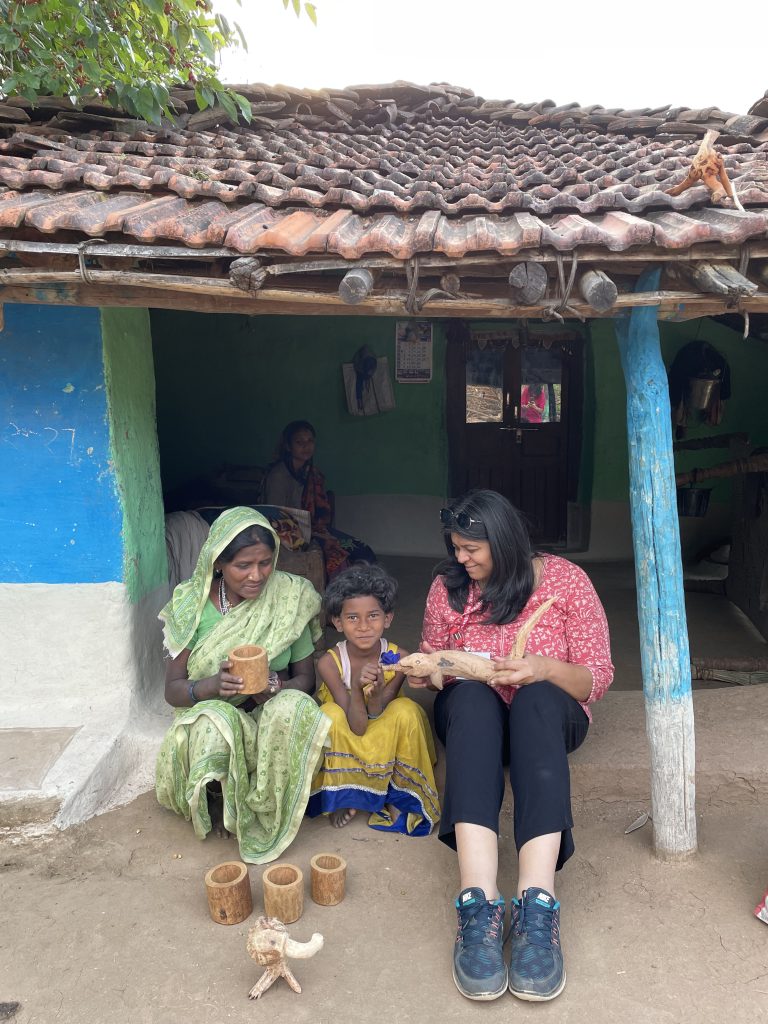
At the Tribal Museum, we had a preview of their mythical and spiritual world, but when we met them in their homes and habitats, we realized that even a few days were not enough.When we met Mr. Sheo Shekhar Shukla, Principal Secretary, Tourism, and MD of MP Tourism Board, he did say that this trip will just be only a teaser and it will make us want to come back again and again. I am already having withdrawal symptoms. And he advised us to leave our rational thinking minds and our scientific temperaments aside when we interact with them.
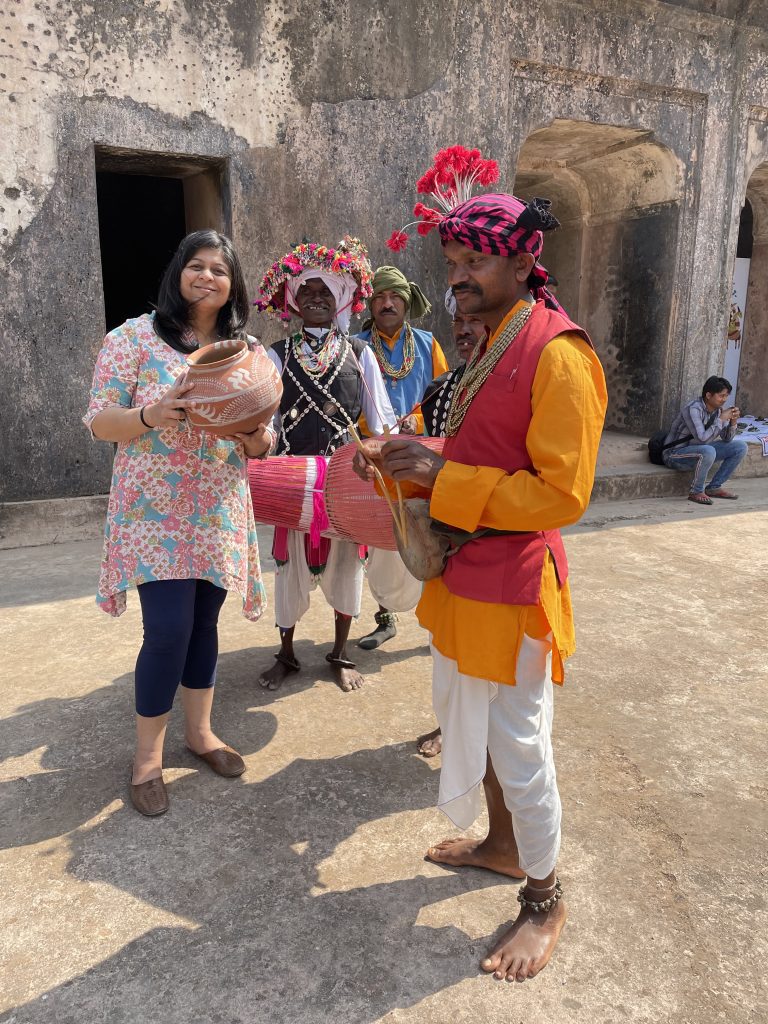
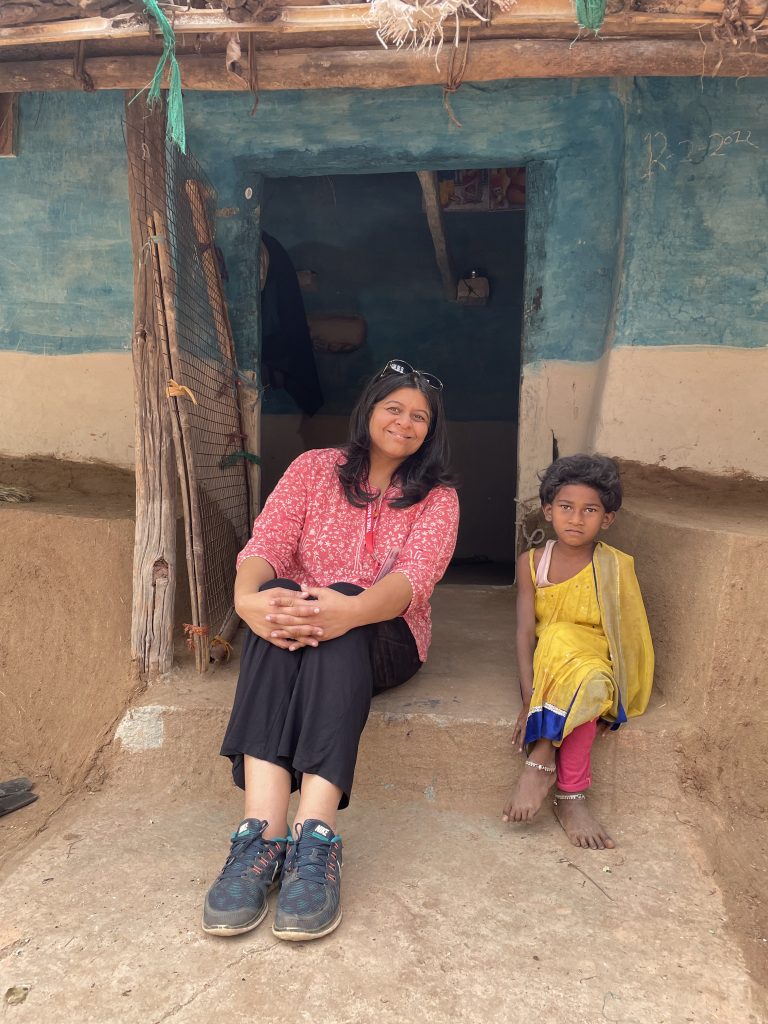
I think that was very important for us to get a better perspective of their lives and lifestyles. He also advised that we need to be a little slow and sensitive in our interactions. In our zest to understand more about them and their stories, I felt that we must not consider them as curio objects in a museum, that we can just walk up to them and thrust a camera or a mike at them. They may have different belief systems and traditions but in my conversations, I realized that their passions and aspirations are the same. And all they want is for us to have a simple chat and to listen to their stories because people make places.
